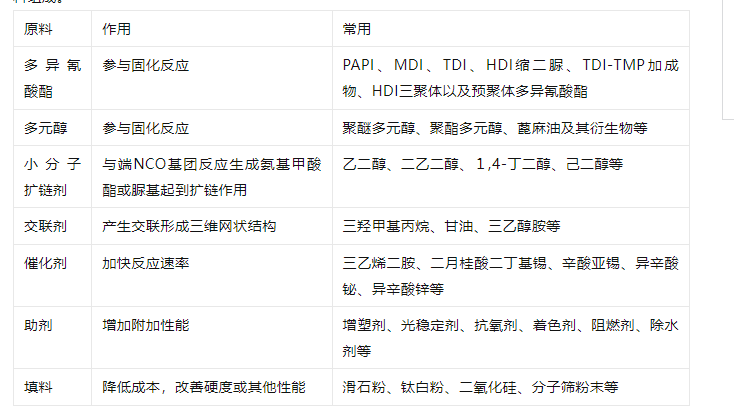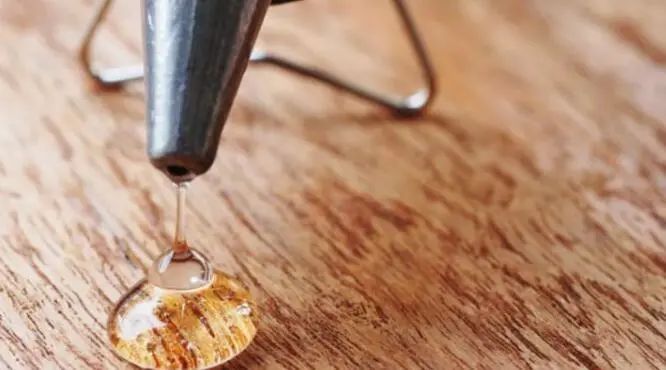Foreword
Two-componentPolyurethane adhesive is usually composed of an isocyanate component (curing agent) containing NCO and a hydroxyl component (main agent) containing hydroxyl groups. During use, the two liquid components are mixed according to a certain ratio, and NCO and OH are used to react to generate solid polyurethane, and then the polar groups of the polyurethane are used to form hydrogen bonds and other bonding interactions with the surface of the substrate to achieve bonding. effect.

Two-component polyurethane adhesives came out early, and their development began in the 1950s. Bayer first developed the Desmoders series of diisocyanates and the Desmophens series of low molecular weight hydroxyl-terminated polyester polyols. The two are configured in a certain proportion. The Polystal series of two-component solvent-based polyurethane adhesives were obtained, laying the foundation for the future industrial development of two-component polyurethane adhesives.
Two-component polyurethane adhesives are reactive adhesives. When the two components are mixed, a cross-linking reaction occurs to solidify and bond. It can usually be cured at room temperature or can be cured by heating. Its final bonding strength is generally greater than that of single-component polyurethane adhesives and can meet the requirements of structural adhesives. In addition, the dosage of the two components of two-component polyurethane can be adjusted within a certain range, and the formula is flexible. By adjusting the raw materials and molecular weight of the two components, products with different properties can be obtained, and can be used in plastics, films, metals, wood, The bonding of glass and other materials has a wide range of bonding.
Two-component polyurethane adhesives can be divided into solvent-based and solvent-free types according to the presence or absence of solvents.
Although solvent-based two-component adhesives have good wettability to the substrate, high bonding strength, and strong permeability, they are not conducive to environmental protection and health.
Solvent-free two-component adhesive does not contain solvents, will not cause pollution due to solvent volatilization, and is safe to operate. It has relatively good development prospects. The main agent and curing agent of solvent-free two-component polyurethane have high viscosity at room temperature, but they are still fluid. When using, mix the two in proportion and raise the temperature to 50-60°C to reduce the viscosity, because it itself It does not contain solvents, so it can be directly coated on the substrate without the need for heating and drying.
Composition
Two-component polyurethane glue is mainly composed of two components. It is customary to call the polyisocyanate component A component or A component, and the hydroxyl component is called B component or B component. In fact, component A (component A) can also be a hydroxyl component, and component B (component B) can be a polyisocyanate component. Component A (polyisocyanate component) is mainly composed of polyisocyanate, small molecule chain extension cross-linking agent, additives, and fillers. Component B (hydroxyl component) is mainly composed of polyol or terminal hydroxyl groups generated by the reaction of polyol and isocyanate. It is composed of polymer, small molecule chain extension cross-linking agent, catalyst, auxiliary agent and filler.
Raw materials
Function
Commonly used
Polyisocyanate
Participate in the curing reaction
PAPI, MDI, TDI, HDI biuret, TDI-TMP adduct, HDI trimer and prepolymer polyisocyanate
Polyol
Participate in the curing reaction
Polyether polyol, polyester polyol, castor oil and its derivatives, etc.
Small molecule chain extender
Reacts with the terminal NCO group to form a carbamate or urea group to extend the chain
Ethylene glycol, diethylene glycol, 1,4-butanediol, hexanediol, etc.
Cross-linking agent
Produces cross-linking to form a three-dimensional network structure
Trimethylolpropane, glycerin, triethanolamine, etc.
Catalyst
Speed up the reaction rate
Triethylenediamine, dibutyltin dilaurate, stannous octoate, bismuth isooctanoate, zinc isooctanoate, etc.
Auxiliaries
Increase additional performance
Plasticizers, light stabilizers, antioxidants, colorants, flame retardants, water removers, etc.
Padding
Reduce costs, improve hardness or other properties
Talc powder, titanium dioxide, silica, molecular sieve powder, etc.
Application
Two-component polyurethane adhesive has the advantages of good mechanical properties, adhesion, chemical resistance, adjustable performance, high bonding strength, and wide bonding range. It is widely used in metals, plastics, packaging materials, and insulation materials. Bonding of other substrates. In terms of application, it can be divided into general-purpose two-component polyurethane adhesives, two-component adhesives for composite films, two-component adhesives for shoes, two-component polyurethane sealants, two-component polyurethane structural adhesives, etc.
Universal two-component polyurethane adhesive
A type of solvent-based two-component polyurethane adhesive developed and applied in the early stage is usually called “two-component polyurethane adhesive”. The main characteristics of this type of adhesive are: a hydroxyl-terminated polyurethane organic solution made from polyethylene adipate glycol and toluene diisocyanate as the main raw materials, and trimethylolpropane-toluene diisocyanate adduct as the main agent. organic solution as a curing agent. This�The adhesive film is strong, impact-resistant, water-resistant, oil-resistant, and has good low-temperature resistance. It is widely used in the bonding of metal and non-metal materials, and can also be used in the composite of general packaging materials and decorative materials.

Two-component polyurethane adhesive for composite films
The main ingredients of two-component polyurethane adhesives for composite films are generally adipic acid polyester polyurethane polyols, copolyester polyurethane polyols (isocyanate-modified copolyester polyols) or aromatic polyols. Ester polyols. The curing agent is generally TMP-TDI adduct. The solvent for this type of adhesive is generally ethyl acetate, which has a low solid content. Mainly used for packaging dry food. The adhesive formula for high-performance composite films may contain main agents that enhance adhesion. When used, the two components are mixed in a certain proportion, and then diluted to a certain concentration with a solvent for coating.

Two-component polyurethane adhesive for shoes
Polyurethane adhesives for shoes are mainly solvent-based two-component polyurethane adhesives. The main agent of this adhesive is a solution of thermoplastic polyurethane. It is characterized by high viscosity and low solid content. It crystallizes and solidifies quickly after the solvent evaporates, and has high initial viscosity. Powerful, suitable for cold bonding process of shoe materials. The preparation of two-component polyurethane adhesive for shoes focuses on the synthesis of the main agent. The main components of the main agent are adhesive TPU made from crystalline polyester diol and MDI. The curing agent component is usually a polyisocyanate cross-linking agent. Commonly used solvents for the main component are ethyl acetate, toluene, methyl ethyl ketone, etc., and mixed solvents are usually used.
Two-component polyurethane sealant
The main agent of two-component polyurethane is usually an NCO-terminated prepolymer obtained by the reaction of polyether polyol and polyisocyanate; the curing agent is composed of polyether polyol, polyamine and other active hydrogen compounds, fillers, thixotropic agents, anti- Oxygen, catalyst, etc. There are also a small number of two-component polyurethane sealants that use hydroxyl components (or polyether filler mixtures or hydroxyl-terminated prepolymers) as the main agent and polyisocyanate as the curing agent. It has the advantages of fast curing rate, good chemical resistance and low cost, and has a wide market in the construction and road engineering fields.